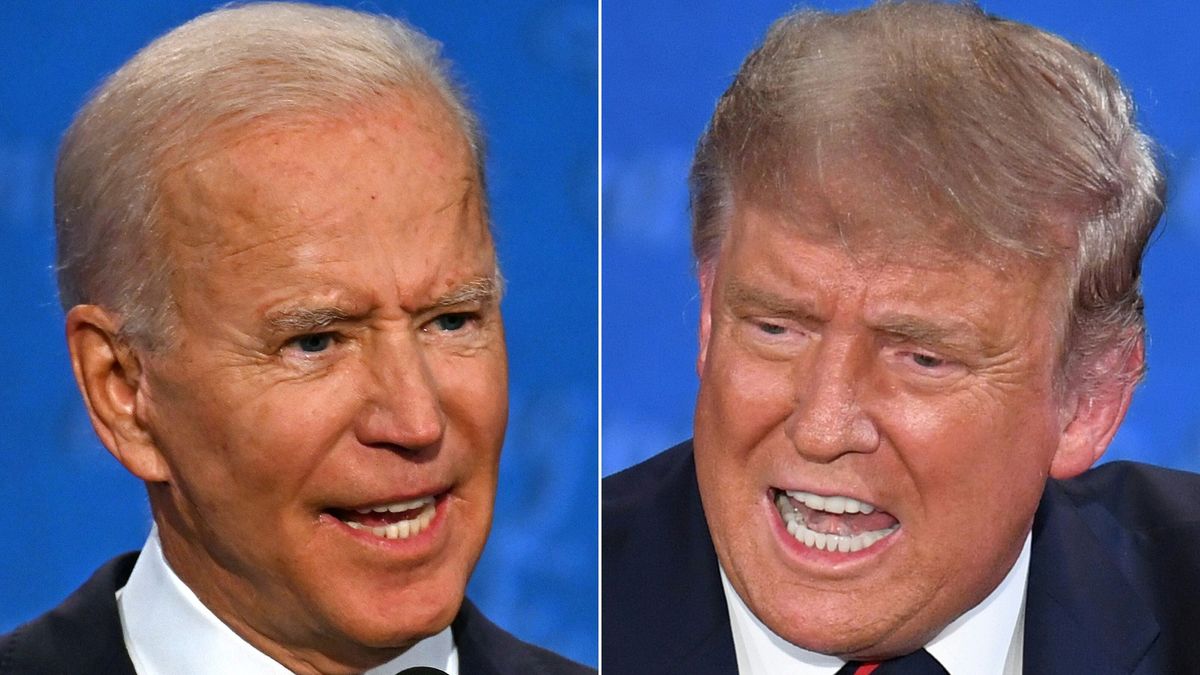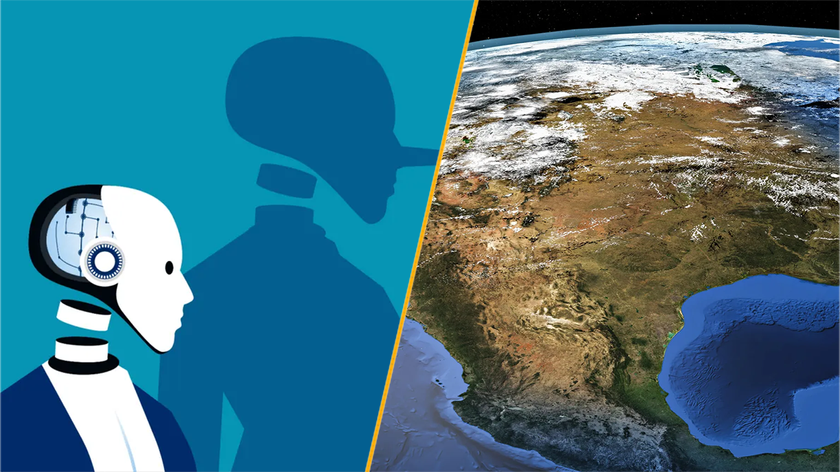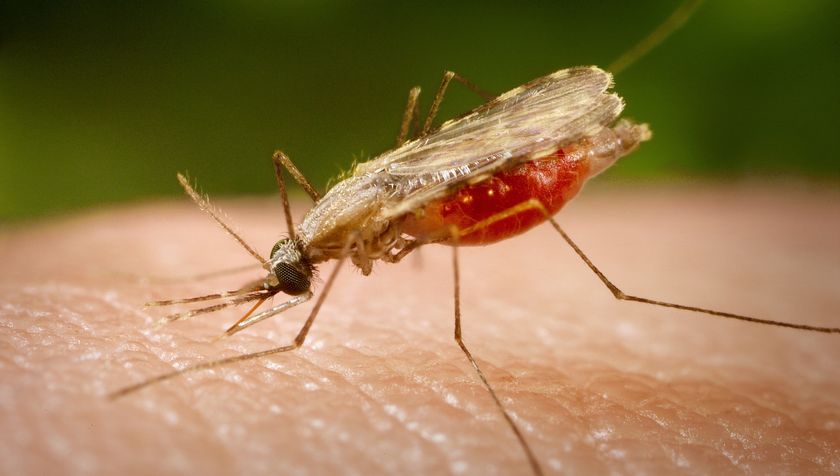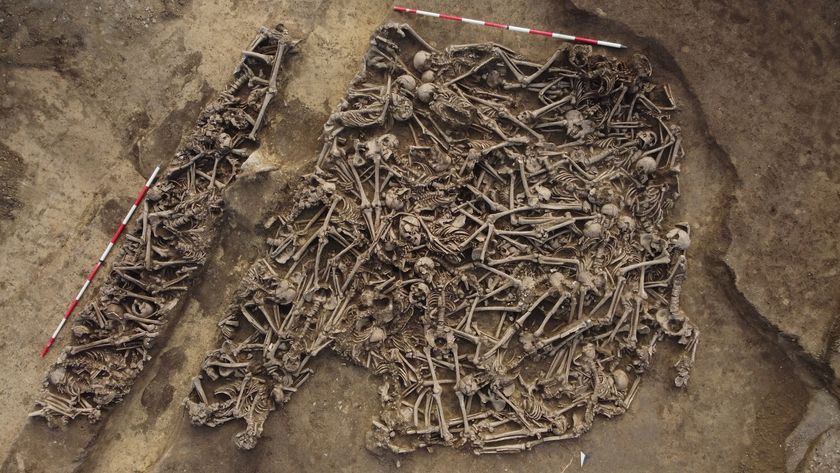7 ways the election will shape the future of science, health and the environment

When all the votes are cast and counted in this year’s momentous November 3 election, the results will have deep and potentially long-lasting impacts on numerous areas of society, including science. President Donald Trump and his challenger, former vice president Joe Biden, have presented vastly different visions for handling crucial issues—ranging from the deadly coronavirus pandemic to the damaging impacts of climate change and immigration policies.
The election’s outcome—not just who wins the White House but who controls Congress—will determine what laws get passed, how budgets are allocated and what direction key science-related agencies (such as NASA and the National Oceanic and Atmospheric Administration) will take. The past four years have been marked by extensive deregulatory efforts that affect climate and public health. The Trump administration has also taken various steps that could undercut access to health care. And it has appointed industry officials to scientific advisory boards and made other moves that are likely to diminish the role and influence of scientific expertise. This approach has shown up acutely in what many public health experts see as the disastrous handling of the pandemic at the federal level—which has, in turn, undermined the reputation of storied agencies, including the U.S. Centers for Disease Control and Prevention.
Here, Scientific American takes a look at how the election could shape a few key scientific issues, depending on who wins.
Will we bend the pandemic curve?
Undoubtedly the most immediate issue Biden or Trump will face as president is the COVID-19 pandemic, which has killed more than 227,000 people in the U.S. to date. Trump and his administration have consistently downplayed the threat to the public. They have failed to address severe testing shortages, flouted basic public health guidelines by holding large rallies and refusing to wear masks (while mocking those who do), and even proved unable to contain outbreaks in the White House itself. The administration has been accused of interfering with federal health agencies for political gain. It has refused funding to the hardest-hit states and communities and, in concert with Republicans in the Senate, opposed pandemic relief bills that included extending the extra unemployment benefits of $600, thus letting them lapse.* Although several potential vaccines are in the final testing stages, none are on track for approval before the election. The president himself has repeatedly spread misinformation about COVID-19, promoting ineffective and dangerous therapies and falsely calling the disease no worse than the flu. He has, again and again, claimed the U.S. is “turning the corner” on the public health crisis, despite record-high numbers of cases and hospitalizations. His own chief of staff recently admitted that “we are not going to control the pandemic.”
Biden, by contrast, has put forth a detailed COVID-19 plan to make testing more widely available and to guarantee that testing and treatment are free. The plan would also continue supporting vaccine development and ensure states have adequate protective equipment and staffing. Further, it would provide economic relief for workers and small businesses and paid emergency leave. Biden has pledged to put scientists and public health experts front and center in daily pandemic briefings. His plan additionally includes preparing the country for future pandemics by supporting research and developing robust disease-surveillance programs. He has promised that on his first day in office, the U.S. would rejoin the World Health Organization (which the Trump administration pulled out of earlier this year). He also aims to restore the White House’s National Security Council Directorate for Global Health Security and Biodefense, which was established by then president Barack Obama in 2014—and disbanded by the Trump administration in 2018. Biden has stopped short of calling for a national mask mandate but has said he would require masks in all federal buildings and interstate transportation.
“The biggest priority will be ending the pandemic and continuing to shepherd vaccines,” says Angela Rasmussen, a virologist at Columbia University. “That’s going to be very challenging because of the loss of trust in health agencies like the CDC.” Biden would need to reengage the public and rebuild that trust, and he should also invest heavily in research and pandemic preparedness and response, Rasmussen adds.
How clean will the air be?
Despite Trump’s pledges to ensure the U.S. has clean air and water, his administration has undertaken significant environmental deregulations. Some of the biggest changes have been to rules addressing greenhouse gases and other air pollutants. The administration has repealed the Obama-era Clean Power Plan (which set limits on carbon emissions from coal- and gas-fired power plants) and now allows states to set their own rules. It has also weakened the fuel-efficiency standards for cars, permitting more tailpipe emissions of greenhouse gases, and has loosened restrictions on toxic mercury emissions from oil- and coal-fired power plants.
Sign up for the Live Science daily newsletter now
Get the world’s most fascinating discoveries delivered straight to your inbox.
A second Trump term would likely continue down the same path. It could, however, face some legal challenges: agencies have not always followed clearly set procedures for rulemaking, which leaves some Trump-era changes open to being overturned by the courts. “This administration’s track record in court is pretty bad,” notes Hillary Aidun, a fellow at Columbia’s Sabin Center for Climate Change Law.
The Trump administration’s existing rollbacks would add the equivalent of an estimated 1.8 billion metric tons of excess carbon dioxide to the atmosphere by 2035, according to an analysis by the Rhodium Group, an independent research outlet. Analyses from both academic scientists and the Environmental Protection Agency have shown that less stringent air pollution regulations can lead to thousands of premature deaths and cause or exacerbate lung illnesses.
Biden has been vocal about reversing Trump’s actions and strengthening regulations—as well as addressing the disproportionate harm pollution causes in Black, brown and low-income communities. Some actions would be easier to undo than others. It would be relatively simple to revoke or alter executive orders and guidance, such as the Trump administration’s directive not to use Obama-era estimates for the social cost of carbon.
Biden can also issue his own executive orders, as he has pledged to do to set a target for reaching net-zero emissions by 2050. Rule changes completed within the past 60 legislative days could be overturned by the new Congress, though this is only likely to happen if Democrats win control of both chambers. Some older regulations, such as the revisions to fuel-efficiency standards, would have to be altered through the laborious federal rulemaking process, which can take years. (There is one exception to the fuel-standards rule: a Biden administration could rescind the withdrawal of California’s waiver to set its own more stringent regulations—which other states would then be free to adopt.)
Who will have reliable and affordable health care?
Trump and congressional Republicans have repeatedly tried to repeal the Affordable Care Act, or ACA. The law provides health insurance to more than 20 million Americans and protects up to 129 million people with preexisting conditions (which could include COVID-19). Repeal efforts have thus far failed, and the Trump administration has not revealed a plan for replacing the coverage. Instead Trump has issued a toothless executive order claiming he will protect insurance for those with preexisting conditions. He has signed several other executive orders that he contends will reduce drug prices, but the details are murky, and the orders are far from being implemented. Meanwhile, in a highly unusual and widely condemned move, his Republican party rammed through Amy Coney Barrett’s nomination to fill Ruth Bader Ginsburg’s Supreme Court seat—just a week before the election. In early November the court is scheduled to hear a case to decide whether the entire ACA is unconstitutional because of its individual mandate to purchase health insurance. The court’s six-to-three conservative majority could also threaten to overturn Roe v. Wade, the landmark 1973 ruling that guarantees the right to an abortion. The Trump administration has already chipped away at women’s reproductive rights through a series of rules that threaten insurance coverage for abortions and contraception. If reelected, he could roll these rights back even further.
Biden was part of the Obama administration, which created the ACA, and he has said that if he is elected, he will build on it rather than replace it. His health plan would add a public option to the ACA, increase tax credits in order to lower premiums and provide coverage for Americans who would have become eligible for Medicaid if their state had not refused to expand it. Biden’s plan aims to make health care more affordable by allowing the public option section to negotiate costs with providers and by repealing the exception that allows pharmaceutical companies to avoid negotiating with Medicare over drug prices. He would also work to shore up access to contraception and abortion by protecting Roe v. Wade, restoring funding to Planned Parenthood and rescinding the so-called Mexico City Policy that bars federal funding to global health organizations that perform or promote abortion as a method of family planning. Biden also says he wants to reduce the unacceptably high maternal mortality rate among women of color and to guard the ACA’s health care protections, regardless of gender, gender identify or sexual orientation. He supports paid leave for workers and has floated a plan to address gun violence.
But Biden’s ideas face some potential roadblocks. “One thing that’s really important to realize, [with a six-to-three conservative majority in the Supreme Court and 200 confirmed judges nominated by Trump], is: anything Biden does is going to be immediately challenged,” says Tim Jost, an emeritus professor at the Washington and Lee University School of Law. And of course, in order to pass any health care legislation, he would likely need a Democratic majority in the Senate.
Who will keep the U.S.—and the world—safe?
In the high-stakes arena of nuclear weapons, the differences between the two candidates could not be clearer. Biden has expressed support for existing arms-control agreements as a way to prevent nuclear proliferation—and annihilation. In contrast, Trump has consistently sought to weaken U.S. participation in such agreements, arguing that unilateral freedom of action is better than accepting safety-boosting norms set by international partnerships.
This “America First” approach has led to numerous setbacks in nuclear nonproliferation during Trump’s first term, most notably the U.S. withdrawal from the Joint Comprehensive Plan of Action in 2018. More commonly known as the “Iran deal,” this 2015 agreement between Tehran and the member nations of the United Nations Security Council was meant to halt Iran’s nuclear-weapons program in return for the lifting of crippling economic sanctions—many of which the Trump administration has now reinstated. Iran has responded in kind by continuing its pursuit of nuclear weapons. Biden has stated he would seek for the U.S. to rejoin the deal.
Similarly, Trump has denounced the only active nuclear arms agreement between the U.S. and Russia—the New START treaty enacted in 2010, which aims to prevent a ruinous cold war–style arms race by limiting the sizes of both nations’ nuclear arsenals. The treaty expires in February, 15 days after the next presidential inauguration, but it includes a provision that it can be renewed for up to five years. Trump had previously called for China to join the treaty (which would be unlikely) before the U.S. would renew, placing New START in limbo. Russia and the Trump administration now seem to be moving toward a short-term extension, but the treaty’s fate remains uncertain. Biden has said his administration would renew it.
Despite his high-profile courting of North Korea’s authoritarian leader Kim Jong-un, Trump has failed to contain the rogue nuclear state’s ongoing development of warhead-carrying missiles that threaten the U.S. and its allies. Biden, in contrast, has compared Kim to Hitler and vowed to take a tougher stance against his regime’s aggressive nuclear aspirations. But even so, according to Jeffrey Lewis, a nuclear-arms expert at the Middlebury Institute of International Studies, in the aftermath of Trump’s actions, “it’s not clear that [a Biden administration] can put Humpty Dumpty back together again.” As for another four years of Trump? “It’s probably back to the arms race and proliferation,” Lewis says.
Who will be allowed to enter the country?
Trump has followed through on his campaign promise to restrict immigration, establishing a number of barriers to reduce the number of both authorized and unauthorized entrants to the U.S. Biden has pledged not only to tear down Trump’s restrictions but also to reform the U.S. immigration system to encourage entry. “Currently, we are not taking advantage of America’s ability to attract the best and brightest workers in the world,” reads a statement on his campaign Web site. Evidence suggests that immigrants boost the economy in general—and they play a particularly significant role in academia and technology.
The president’s anti-immigrant policies and rhetoric are already impacting U.S.’s ability to attract foreign-born talent. The number of new international students has fallen each year since 2016, depriving colleges and universities of their tuition—and the tech sector of their abilities. After graduation, many such people continue working here: for example, more than 80 percent of international students who earn doctorates in artificial intelligence at U.S. institutions remain in the country after graduation. In fact, more than half of the nation’s AI workers were born abroad, and as China strives to overtake it in this field, the U.S.’s ability to attract AI researchers will be vital. Artificial intelligence is only one example. Any highly technical research field, such as quantum computing, relies on skilled workers with specialized knowledge, many of whom come from beyond U.S. borders. This reliance is so important to both academia and technology companies that the Trump administration’s onerous new visa rules for skilled workers have drawn lawsuits from entities in both fields.
If Biden wins the election, his proposed immigrant-friendly policies could restore the U.S.’s reputation as an attractive destination for scientists from all over the world. If Trump remains in power, his administration will likely continue to restrict people born elsewhere from entering the country, driving many stars of artificial intelligence, quantum computing and other fields to take their valuable talents elsewhere.
Where will we go in space?
The next administration must decide whether to push on toward Trump’s goal of sending astronauts back to the moon by 2024 and then on to Mars in the 2030s under the Artemis program. Budget uncertainties and technical challenges make the deadline for a moon landing tight. The main hurdle in returning to Earth’s satellite is transportation, and NASA is developing its Space Launch System (SLS) heavy-lift rocket for the mission. It is also contracting with three commercial companies to develop vehicles to touch down on the moon’s surface and then launch astronauts back to lunar orbit for the return trip.
New presidential administrations have a history of changing space-exploration plans, with the inevitable result of delaying any eventual goal by forcing NASA to change gears. Former president George W. Bush had instructed the agency to head for the moon under the Constellation program, but his successor Obama cancelled Constellation and directed NASA to make a charge for an asteroid instead. When Trump took office, the U.S. set its sights back on the moon—resulting in neither goal being achieved so far. If Trump wins again, he will presumably continue on the current course. Biden has not explicitly stated his space goals, but he might at least push back the Artemis time line, as suggested by a U.S. House bill introduced in January 2020.
What will happen to our shared lands?
The fate of more than a quarter of the nation’s land—and with it, a sizable chunk of its greenhouse gas emissions—is in the hands of the next president. The federal government owns some 640 million acres of land in the U.S., managing its use for purposes ranging from conservation to energy development. Nearly 20 percent of the country’s emissions come from producing and using oil, gas and coal extracted from these public lands, which encompass ecologically important wilderness areas, as well as culturally and scientifically significant national monuments. Tensions over how to balance preservation of the land with natural-resource development have always existed. But against the backdrop of the unfolding climate crisis, the stakes are now higher than ever before.
Trump’s administration has made vast tracts of public land available for resource extraction. It has opened up parts of Alaska’s Arctic National Wildlife Refuge to oil and gas development—and now proposes to do the same with most of the nearby National Petroleum Reserve in Alaska. The latter is the country’s largest single piece of public land; it contains critical habitats for polar bears, caribou and other animals. In September the administration released its plan to open more than half of Alaska’s Tongass National Forest—an intact temperate rain forest that stores about 8 percent of the carbon held in all the forests in the lower 48 states combined—to logging, which would release greenhouse gases back into the atmosphere.
In Utah, Trump has drastically downsized the Grand Staircase-Escalante and Bears Ears national monuments, which contain hundreds of key fossil and archaeological sites. This change leaves nearly two million acres of previously protected land open to uranium mining, oil and gas drilling, and road construction. In New Mexico, his administration is looking to sell oil and gas leases in the area around Chaco Canyon, the sacred ancestral grounds of Navajo and Pueblo peoples. Since taking office, the Trump administration has offered millions of acres of public lands across the country for fossil-fuel-lease sales. And in July it rewrote the National Environmental Policy Act (NEPA)—a foundational conservation law—to limit environmental review of, and public input on, proposed infrastructure projects, among other changes. In his pursuit of his “energy dominance” agenda, Trump will continue to push for deregulation, exploration and fossil-fuel extraction on public land if he is reelected.
If Biden is elected, he has pledged to take executive action on day one that would include “permanently protecting the Arctic National Wildlife Refuge and other areas impacted by President Trump’s attack on federal lands and waters” and “banning new oil and gas leasing on public lands and waters.” Importantly, Biden would be able to nominate new people to lead the Department of the Interior and its subagencies, including the Bureau of Land management, which control most public land. And he could, with the support of a Democratic Congress, undo Trump’s changes to NEPA.
*Editor’s Note (10/30/20): This sentence was edited after posting to correct the figure for extra unemployment benefits.

Andrea Thompson is an associate editor at Scientific American, where she covers sustainability, energy and the environment. Prior to that, she was a senior writer covering climate science at Climate Central and a reporter and editor at Live Science, where she primarily covered Earth science and the environment. She holds a graduate degree in science health and environmental reporting from New York University, as well as a bachelor of science and and masters of science in atmospheric chemistry from the Georgia Institute of Technology.










